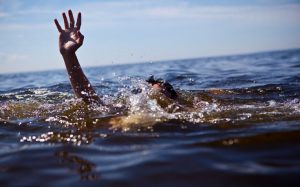Fatal and nonfatal drowning accidents are devastating and that so many of these accidents are preventable is an even greater tragedy. Drowning accidents are common in many parts of the U.S., especially in summer. About ten people die from unintentional drowning per day, according to the Centers for Disease Control (CDC).
Drowning and Non-Fatal Drowning— Definition
 The World Health Organization (WHO) defines drowning outcomes as “ the process of experiencing respiratory impairment from submersion/immersion in liquid.”
The World Health Organization (WHO) defines drowning outcomes as “ the process of experiencing respiratory impairment from submersion/immersion in liquid.”
It categorizes drowning as fatal or non-fatal. In non-fatal drowning (also known as near drowning), “ the process of respiratory impairment is stopped before death”. Further, to be classified as a nonfatal drowning, there must be evidence of respiratory impairment.
At The Killino Firm we recognize that a drowning injury or death will change our clients’ lives forever. As a result, we provide personalized and caring representation, while zealously fighting for our clients at every stage of their cases, including trial, if necessary.
Drowning Statistics in the U.S.
- From 2005-2014, there were an average of 3,536 fatal unintentional drownings annually.
- An additional 332 people died each year from drowning in boating-related incidents.
- More than 50 percent of drowning victims treated in emergency departments require hospitalization or transfer for further care.
- Drowning is a leading cause of unintentional injury death, ranking fifth in the U.S.
- Nearly 80 percent of people who die from drowning are male.
Five most common causes of drowning (CDC)
- Lack of swimming ability.
Too many adults and children get into the water without proper swim training and without water safety knowledge. About 25-30 percent of drowning victims have actually had swimming lessons. - No barriers around the pool.
A fence (with a lock) separating the pool area from the house and yard reduces a child’s risk of drowning by 83 percent. - Lack of supervision.
A lifeguard or a competent supervising adult should always be on duty. Never swim alone and follow the 10/20 rule: Scan the area every 10 seconds and always be able to reach the water within 20 seconds. - Failure to wear life jackets.
Of the 72 percent of boating deaths in 2010 caused by drowning, 88 percent were not wearing life jackets. - Alcohol use.
Alcohol use accounts for 70 percent of water-related deaths among adolescents and adults. One in five boating deaths involves alcohol. The ability to swim and your judgment regarding how long or how far you can swim may be severely limited under the influence of alcohol. According to the U.S. Coast Guard, about 50 percent of all boating accidents and 31 percent of all boating deaths involve alcohol consumption.
Other drowning causes include:
- Defective equipment such as latches, pool pumps and filters
- Defective installation of a fence or locked gate
- Defective products such as floatation devices or pool toys
- Unmaintained or defective pool drains causing entrapment
- Manufacturing or design defects of spas and therapeutic hot tubs
- Failure to meet industry standards, laws and regulations (i.e., the Virginia Graeme Baker Pool and Spa Safety Act)
- Operating watercraft recklessly
- Inadequate warning signs
If you have lost a loved one in any type of drowning accident, it is likely that considering a lawsuit may be far from your top priority. However, there are many strong reasons that would make a legal action the correct thing to do. If safety standards have not been followed, other young people are at risk, and the legal action that you take could bring about change and save future lives.
Drowning Risk – Location
Drownings can occur in many places, including at public and private swimming pools, from the YMCA and summer camp to hotels and cruise ships. Lakes and ponds, spas, hot tubs and even in bathtubs. People of different ages drown in different locations: Most children ages 1-4 drown in home swimming pools while over half of fatal and nonfatal drownings among those 15 years and older occurred in natural water settings.
Common causes of swimming pool drowning include:
- Improper or defective gates and fences
- Defective swimming pool drains (all drains must be covered)
- Defective filters, known to cause drowning by suction–hair getting caught
- Distracted and/or insufficiently trained lifeguards
- Improper pool maintenance
- Inadequately marked shallow or deep ends
- Murky pool water
- Overcrowded swimming facilities
- Slick pool decks
If a pool is not operated, secured or maintained properly, serious drowning injuries can occur, including brain and spinal cord injuries and even drowning death.
Negligence often plays a part in drowning and non-fatal drowning cases, whether the cause is lack of supervision or a problem with the premises. For instance, if a lifeguard does not pay proper attention to swimmers and someone drowns while on their watch, the lifeguard, as well as the premises’ owner, may be charged with negligence.
Negligent parties can include recreational centers and hotels, condominium associations, private premises owner and swim management companies. Perhaps structural or mechanical defects or a problematic design are at fault.
Victims of drowning negligence deserve the maximum compensation and damages, whether dealing with the effects of a nonfatal accident or a wrongful death case.
Drowning accident attorneys at the Killino Firm can determine if someone else’s negligence caused a nonfatal drowning injury or a drowning wrongful death. To prevent such drowning accidents to happen again it is important to hold all wrongdoers accountable.
Commons signs of Drowning
Keep in mind that most drowning accidents are preventable and learning the signs of Instinctive Drowning Response (see video) can help you save a life. It’s important to understand that drowning victims don’t typically wave for help, and once a person begins drowning, they must be rescued within 20- 60 seconds, the time that a body can remain upright in the water.
In the above situations there are three main types of victims:
- Distressed Swimmer shows signs of anxiety or panic, struggling but keeping head above water. May call, splash, or wave for help.
- Active Drowning Victim can’t stay above the surface and may have head thrown back with face upward, arms flapping. Unable to call for help.
- Passive Drowning Victim is unconscious or below water, most likely not breathing with face in the water.
Nonfatal Drowning (Near drowning) Injuries and Complications
Drowning accidents deprive the body of oxygen for a period of time. The body will begin to shut down, the individual typically loses consciousness and water may end up entering the lungs. Heart problems could lead to cardiac arrest and death.
In non-fatal cases, irreversible brain damage usually occurs after 4-6 minutes of submersion. About 20 percent of victims suffer severe, permanent neurological disability. Nonfatal drowning survivors may suffer disabilities such as memory loss, learning disabilities, lung damage, nerve damage, pneumonia, and loss of basic motor skills (e.g., permanent vegetative state).
What Needs to be Done
Because there are likely a number of circumstances that could lead to serious injury or even death, it is imperative to discuss your potential case with a lawyer immediately.
Experienced rowning accident attorneys at the Killino Firm will gather all information and documents as soon as possible. They will obtain police reports, witness statements and obtain and preserve photos and videos. They scrupulously search pool maintenance inspections, even lifeguard training and their work schedules, licensing and prior violations.
When you need a lawyer who will exhaustively investigate a drowning case and make sure that every responsible party is held accountable, contact The Killino Firm. To speak with one of our attorneys, call us toll free at 877-875-2927, or send an email to our drowning accident lawyer today. We will respond promptly to your inquiry.







